Top Image: Sewer guides from after trip from Śródmieście to Mokotów district at Malczewskiego 6 street. From the left: Henryk Ziółkowski “Góral,” Barbara Filipowicz-Tomaszewska “Barska,” Jerzy Krzysztofowicz “Selim,” and Janina Zaborowska “Rena.” Sabina Zdzarska, “Warsaw Uprising Sewer Guides,” Warsaw, 1944.
Author’s note: Many of the locations mentioned in this article have changed names several times over the course of the twentieth century. In order to maintain historical accuracy, I have used the names of places as they were in 1944, but have included present-day designations as needed in parentheses to avoid confusion.
“The boundary between fighters and participants has been erased…it is a battle that is being carried on by the civilian population as well as by the AK.”
Polish Home Army (Armia Krajowa or AK) officer
Initial plans for Operation Tempest, a series of planned uprisings in key German-held cities in Poland during the summer of 1944, did not include Warsaw. The exiled Polish government in London and the Polish Home Army (Armia Krajowa or AK), however, made a last-minute decision to begin an armed uprising in the Polish capital on July 31, 1944. The main goals of the uprising were to liberate the country from occupying German forces, legitimize the exiled Polish government, and present Poland as a country on equal footing with the USSR before a Soviet-backed regime could be installed.
To completely eliminate German control in Warsaw, however, the leaders of the AK needed Soviet military support, which meant the timing of the operation had to coincide with the arrival of the Red Army in Warsaw and the retreat of German forces from the city. On July 27, 1944, the 1st Polish Army, which had been incorporated into the Red Army earlier that year, was only 50 km (30 miles) south of Warsaw near the Vistula River’s junction with the Pilitsa.
Two days later, the Soviet commanding officer, Konstantin Rokossovsky, ordered the tanks of his Second Army to probe German defenses outside of Warsaw. As the first company broke through German defenses and entered the outskirts of Warsaw’s eastern suburb, the leaders of the Polish resistance made the decisive move to begin an armed insurrection in the Polish capital.
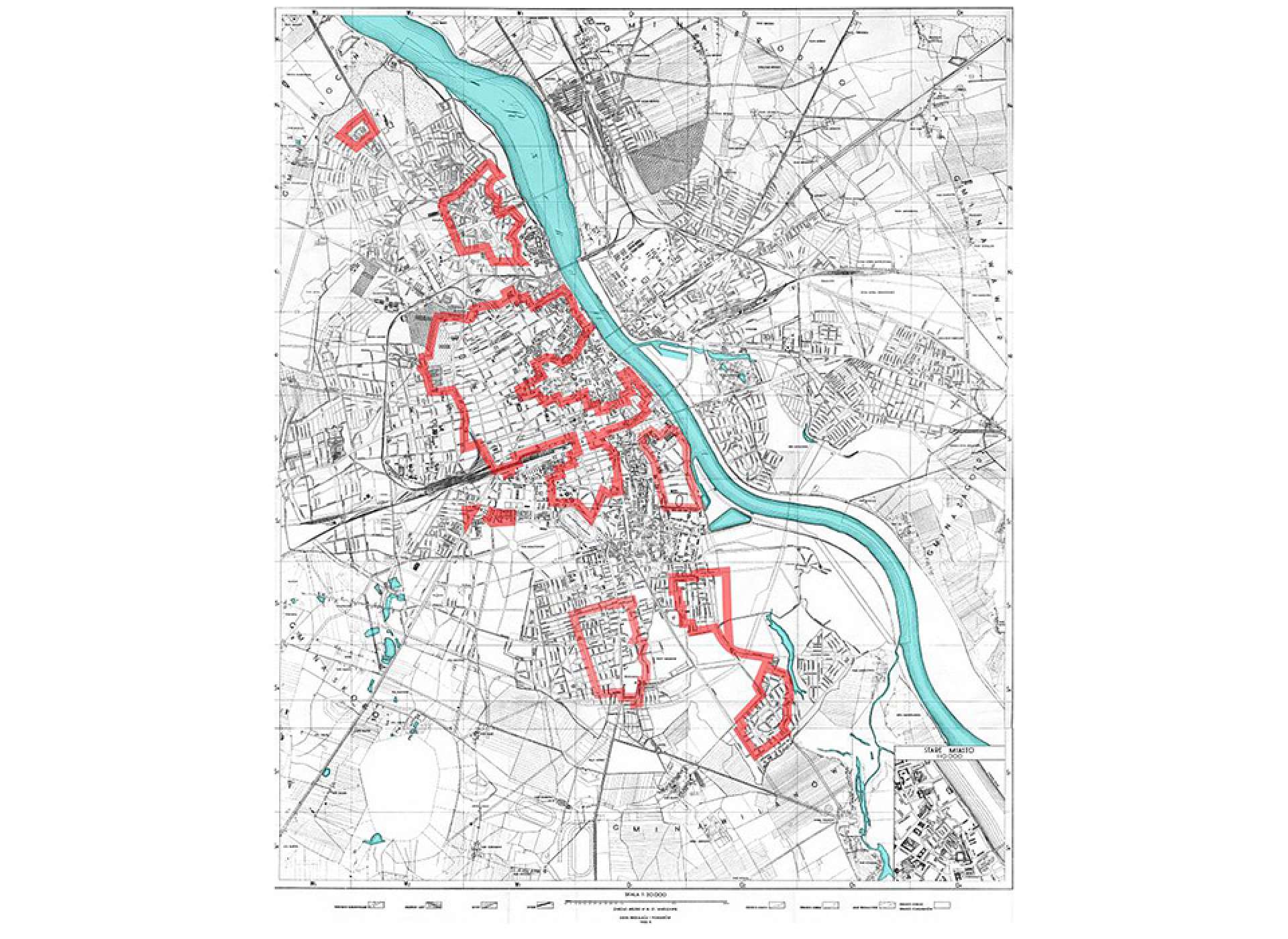
The areas of Warsaw controlled by the Home Army on August 4, 1944. Not all areas outside of the designated zones were controlled by the Germans, since there were no stable front-lines and in early August much of the city was still a no-man’s land. “Warszawa Powstanie 1944-08-04.”
The Warsaw Uprising, which started on August 1, 1944, and lasted until October 2, 1944, was a major military endeavor of the Polish resistance movement during World War II. From the beginning, civilians were embroiled in the 63-day conflict enduring relentless airstrikes and the resulting fires that forced them from their homes. They were also working to procure arms, provide supplies for insurgents, erect defensive barriers, extinguish fires, and carry messages underground.
Yet, as the Soviets halted their offensive—which to this point had been a remarkable success—Nazi units had time to regroup and organize a counteroffensive, forcing the armed insurrection to hold out much longer than originally planned. Civilians were initially in favor of the uprising since they believed, as did the AK, that the fighting would last only a few days. As the unrest raged on and Warsaw received little help from the Soviets, however, civilian support diminished, leading to tensions between the AK and the population of Warsaw.
The Outbreak and Civilian Response
When General Tadeusz Komorowski, better known by his nickname Bór-Komorowski, issued the order for the AK to mobilize on August 1, 1944, the streets filled with AK soldiers as they rushed to their meeting points, many wearing civilian winter clothes to conceal weapons and ammunition despite the summer heat. After nearly five years of Nazi occupation, the civilian population in Warsaw longed for revenge.
Civilians had not been told about the uprising for security reasons, but on that day the mood in the city was full of excitement, electricity, and exhilaration—the city’s population believed that they would finally be freed from their Nazi captors. Rubin Katz, who was living in Warsaw at the time, recalled the excitement in Warsaw in the hours following the outbreak of the uprising:
“We went into another room and produced a hitherto banned Polish national flag, which had been hidden since the war began, and unfurled it from the balcony railing. In no time at all other people, up and down the street, did the same, and put out their red and white flags, hanging them from flagpoles and out of windows.”
Amid the excitement, civilians flocked to assist the Home Army by shoring up cellars, tunneling underground passageways, creating barricades by tearing up paving stones, and overturning trams and other vehicles. According to the testimony of Tadeusz Szczęsny, “Children, adults, old people—all wanted to help. They carry what they have, paving stones, bricks, tiles, wood, heavy furniture, a child’s pram, and sandbags.”
Witness accounts also describe residents holding meetings and conferences in courtyards and making defensive preparations. Entire neighborhoods organized themselves into groups. Several tram drivers used iron crowbars and pickaxes to break cobblestones into pieces of concrete slabs to construct barricades. Other people were seen hurling Molotov cocktails out of top-floor apartment buildings at German tanks and armored vehicles on the street below.
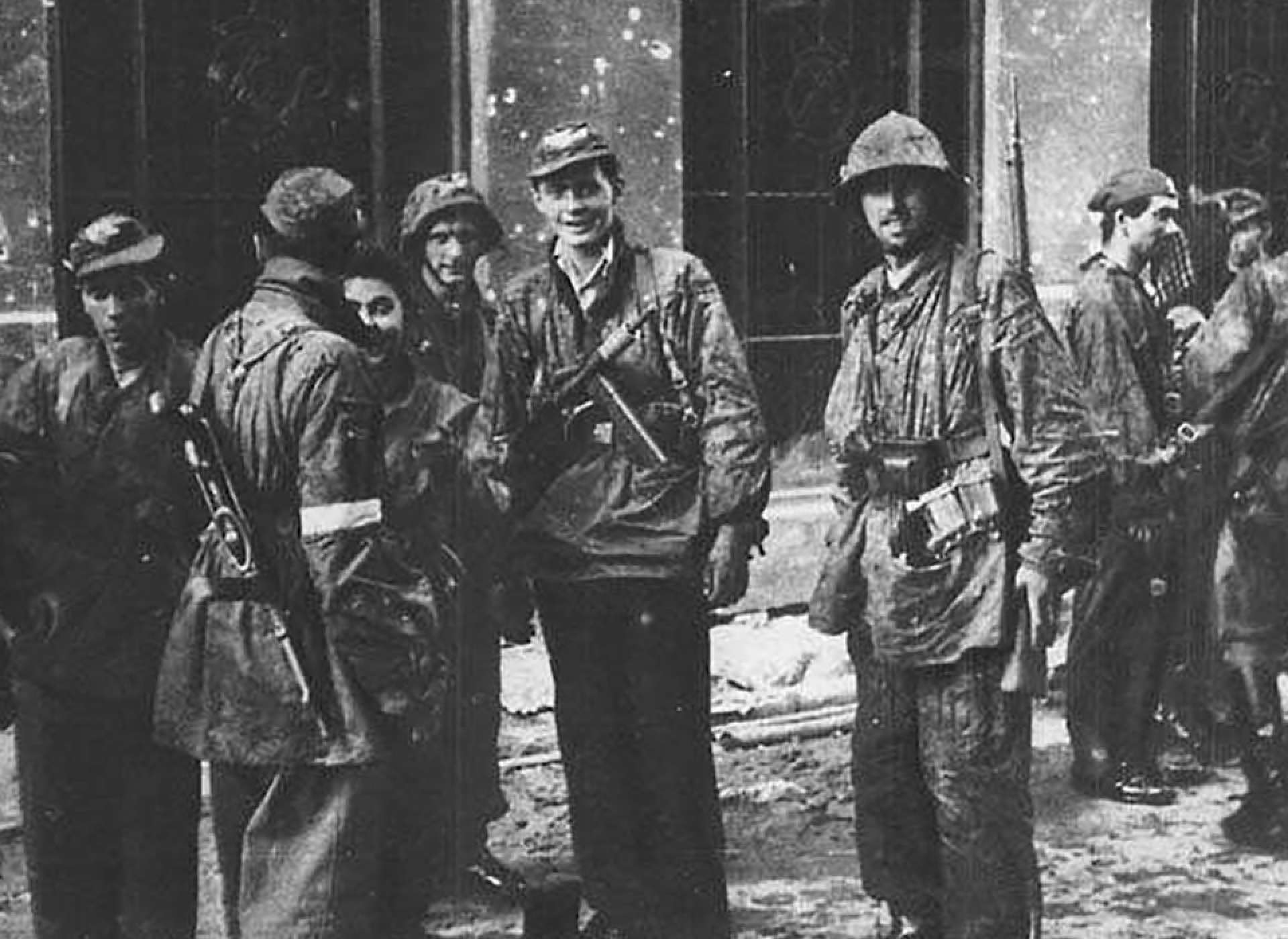
Warsaw Uprising: Soldiers from “Maciek” Company of “Zośka” Battalion, which was part of the “Radosław” Regiment, after a several hour sewer march from placu Krasińskich to Warecka street in Śródmieście district on the morning of September 2, 1944.
A number of surviving Jewish fighters from the Warsaw Ghetto Uprising of 1943, and others who had emerged from hiding, seized the opportunity, and immediately joined their fellow citizens in the momentous struggle. Although it is well documented that the AK leadership did not allow Jewish soldiers in their ranks, some units were more tolerant and allowed what was left of the city’s Jewish population to serve alongside their compatriots. The Socialist People’s Army (Armia Ludowa), for example, readily accepted Jewish soldiers and volunteers into its ranks but, ultimately, the decision depended on the attitude of the commanding officers.
In one instance, a group of Jewish prisoners were given permission to join the ranks of the Zośka Storm Battalion. During the first week of the uprising, the battalion, which was largely comprised of Polish Boy Scouts, was ordered to liberate Gęsiówka, a concentration camp located on Gęsia (“Goose”) Street inside the walls of the former Jewish Ghetto. After the AK captured the camp, soldiers found hundreds of prisoners in the middle of the camp drawn up, military style, in two long ranks. This “Jewish Battalion,” led by Henryk Lederman, stood ready for action. The site astonished the commanding officer, W. Micuta, who stated,
“not only had they not been broken by Nazi savagery, they had managed to organize themselves, despite the conditions in the camp, and ready themselves as soon as an opportunity occurred.”
Due to the welcome response of an armed uprising among the city’s population, on August 3, Bór-Komorowski reported to the exiled Polish government that morale was high throughout the city as men and women rushed to join the AK and volunteered for a variety of roles. The majority of volunteers were workers, railway men, artisans, clerks, and factory workers, leading Bór-Komorowski to note that AK methods could not “be compared with the attack of any regular army.”
Instead, he argued, “it had all the drive and enthusiasm of a revolutionary uprising. His report continued, maintaining that the success in the first few days of the uprising could be attributed to “the impetuous fervor of this first onslaught,” which “more than made up for the poor quality of arms.”
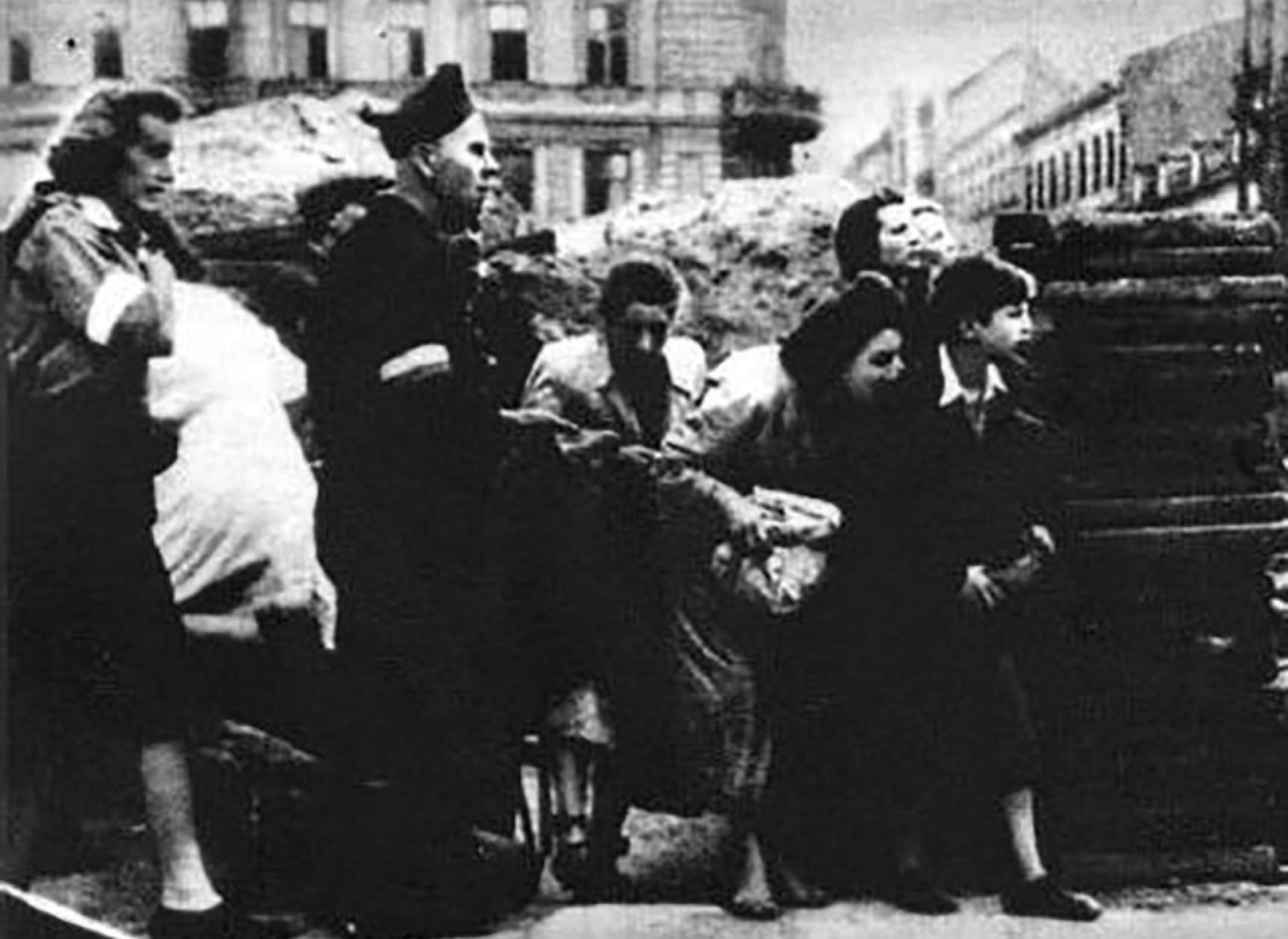
Civilian hide behind make-shift barriers at a street crossing. Jan Grużewski, “Warsaw Uprising: Street Crossing under German Fire,” Dni Powstania, Kronika Fotograficzna Walczącej Warszawy, (Stanisław: Stanisław Kopf, 1957).
Despite Bór-Komorowski’s reported optimism, because the AK did not inform the people of Warsaw about the uprising, many citizens became trapped in the chaos that defined those first few days of the insurrection. Those attempting to return home from work were cut off and separated from their families with no way to contact their loved ones. Children were left abandoned when their parents were unable to return home or were killed.
An untold number of people caught in the crossfire were killed, their bodies left in the streets to be covered by dust and debris from exploding buildings. Miron Bialoszewski described the atmosphere during those first days as he navigated the streets of Warsaw trying to make his way home:
“A crush. Panic. Prayer. Explosions. The rumbling, bursting of bombs. Groans and fear. The casualties and suffering of the city’s population during those first few days foreshadowed the tragedy that was yet to come.”
The Role of Women Combatants and Volunteers
The role of women in the Polish resistance movement and the Warsaw Uprising was crucial. Women held a variety of important positions, ranging from traditional female roles—cleaning, making beds, cooking, and delivering food—to serving as couriers and liaison offices. Polish wives, mothers, and grandmothers provided a social infrastructure, worked as nurses, and comforted soldiers.
Women were also involved in heavy fighting—one in seven combatants were women. The women’s unit “Dysk,” for instance, was one of five elite “Kedyw” battalions led by Jan Mazurkiewicz. During the first week of the uprising, these well-equipped soldiers succeeded in taking a huge chunk of northern Wola (a district in the western part of Warsaw).
On August 2, 1944, “Dysk” attacked the Waffen SS supply depots at Stawki, where a year and a half earlier the Jewish population of the Warsaw ghetto had been held before being sent to Treblinka. They killed all the German guards and freed a number of Jewish forced laborers. These SS warehouses contained enormous qualities of food, which would help keep the people living in the Old Town sector of Warsaw alive in the weeks to come.
Special sapper units, made up entirely of young women called minerki, saw the most hand to hand combat fighting during August and September. On August 20, the AK mounted an attack on several key Nazi positions, one of which was the State Telephone Exchange (PAST Building), Warsaw’s only skyscraper at the time.
The Battle for the PAST Building had been dogged by heavy, hand to hand combat for several days, when minerki units led an attack on the building. Detonating homemade explosives in the lower levels of the building, they pushed the building’s defenders to rooftops and, armed with homemade flamethrowers, set the building ablaze. Most of the German defenders inside the building jumped to their death to avoid the rapidly spreading fire or were killed trying to flee back down the stairs, making the mission a success.
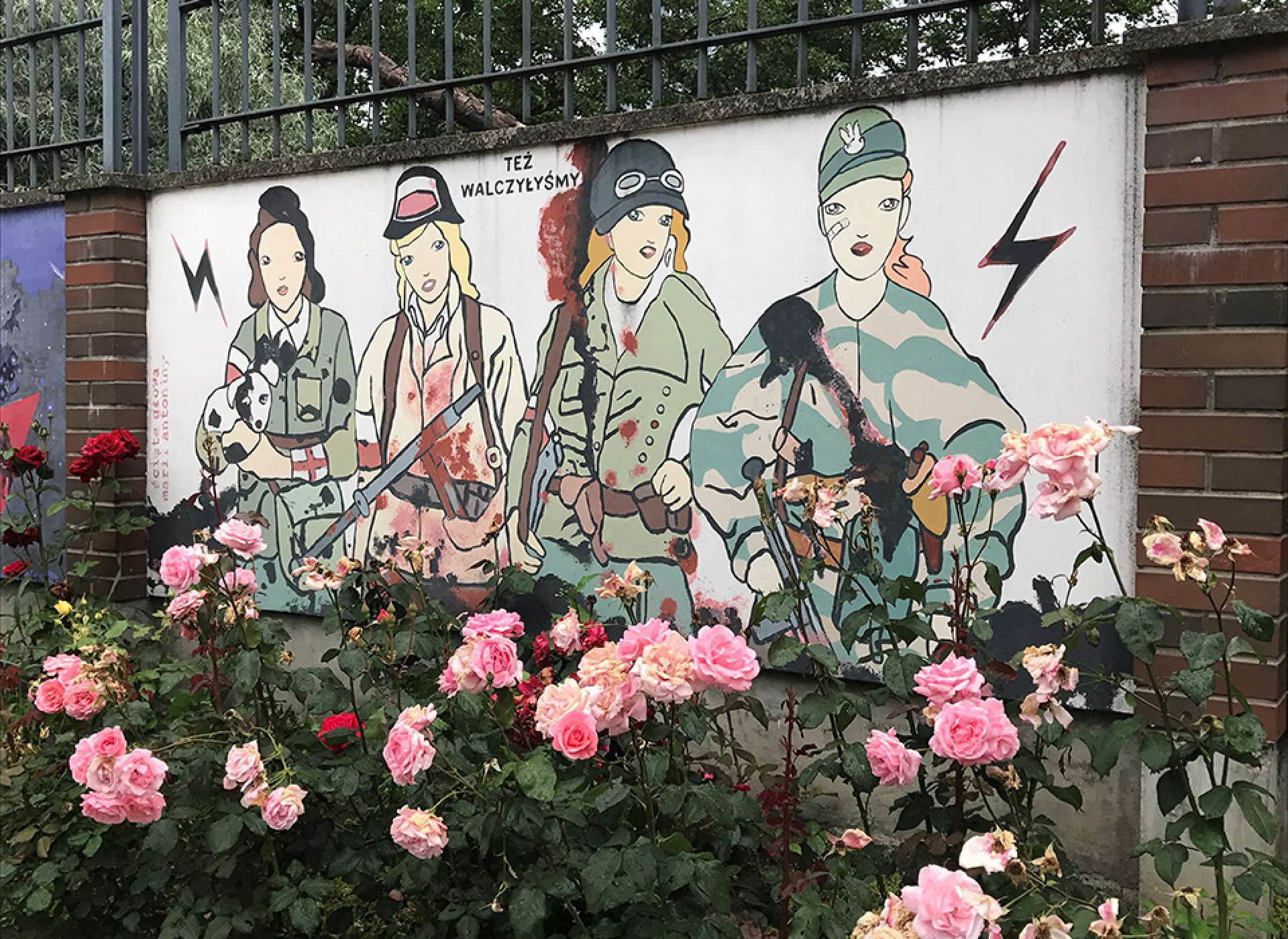
Painting in the courtyard behind The Warsaw Uprising Museum entitled “We also fought.” The Warsaw Uprising Museum, 2017, taken by Jennifer Popowycz.
As a result of their combatant roles, several women attained high ranks within the AK, such as Mariai Tarnowska, who helped in negotiation talks with the Germans concerning the evacuation of civilians from the city center and the terms for capitulation. One of the most famous, Wanda Gertz, who fought in the Polish Legion attached to the Austro-Hungarian army during World War I, became an officer and commander of an all-female battalion, and was eventually promoted to the rank of Major in September 1944.
Women within the AK had been aware of the uprising in advance, had been properly trained, and were therefore prepared for what was to come as a result of the revolt. However, like the city population as a whole, although many women rushed to volunteer and served as couriers and nurses, they had not been properly trained and became disheartened, overwhelmed, and exhausted after the first week of the revolt.
This was particularly true for women who volunteered as nurses, most of whom had no medical training, but had to assist in amputating limbs and bandaging severely burned victims—the two most common injuries. Many of the patients were adolescents, which was particularly hard for some women to witness.
Halina Zbierska, a 20-year-old student who had to assist in the amputation of an 18-year-old boy’s leg, fainted during the procedure. Sabina Sebylowa, another volunteer nurse, wrote in her diary, “after the euphoria and enthusiasm it is a shock and makes us quite depressed.” The diminishing morale seen in women volunteers represented the vast majority of the population as the city’s inhabitants became increasingly disillusioned after several weeks of insurrection.
Child Soldiers
According to the current definition set out by UNICEF in the Paris Principles of 2007, a child soldier is “any person below 18 years of age who is or has been recruited or used by an armed force or armed group in any capacity, including but not limited to children, boys and girls, used as fighters, cooks, porters, messengers, or spies.” There was, however, no contemporary definition that was internationally accepted.
During World War II, child insurgents between the ages of 11 and 18 served as full-fledged members of the Polish Home Army. While they mainly served as messengers and porters, delivering reports and carrying medicine, food, ammunition, and weapons, children also played important roles putting out fires and digging graves for those who were killed. Equipped with hand grenades, Molotov cocktails, and occasionally firearms, some young adults also actively engaged in combat.
Jerzy Filipowicz’s memoir, I Was Fourteen Back Then, (Mialem wtedy 14 lat), one of the few memoirs written by a former child insurgent, joined the underground resistance movement when he was 13. Initially assigned as a courier, transporting and delivering parcels, Filipowicz participated in many skirmishes across the city. Only armed with hand grenades and a pistol, he describes the uprising as a series of conflicting emotions including “fear, the exhilaration of having won a small-scale battle, and a sense of inadequacy in the company of his older fellow insurgents.” For many adolescents, taking part in the uprising gave them a sense of belonging and a way to logically process the uncertainty of foreign occupation and total war.
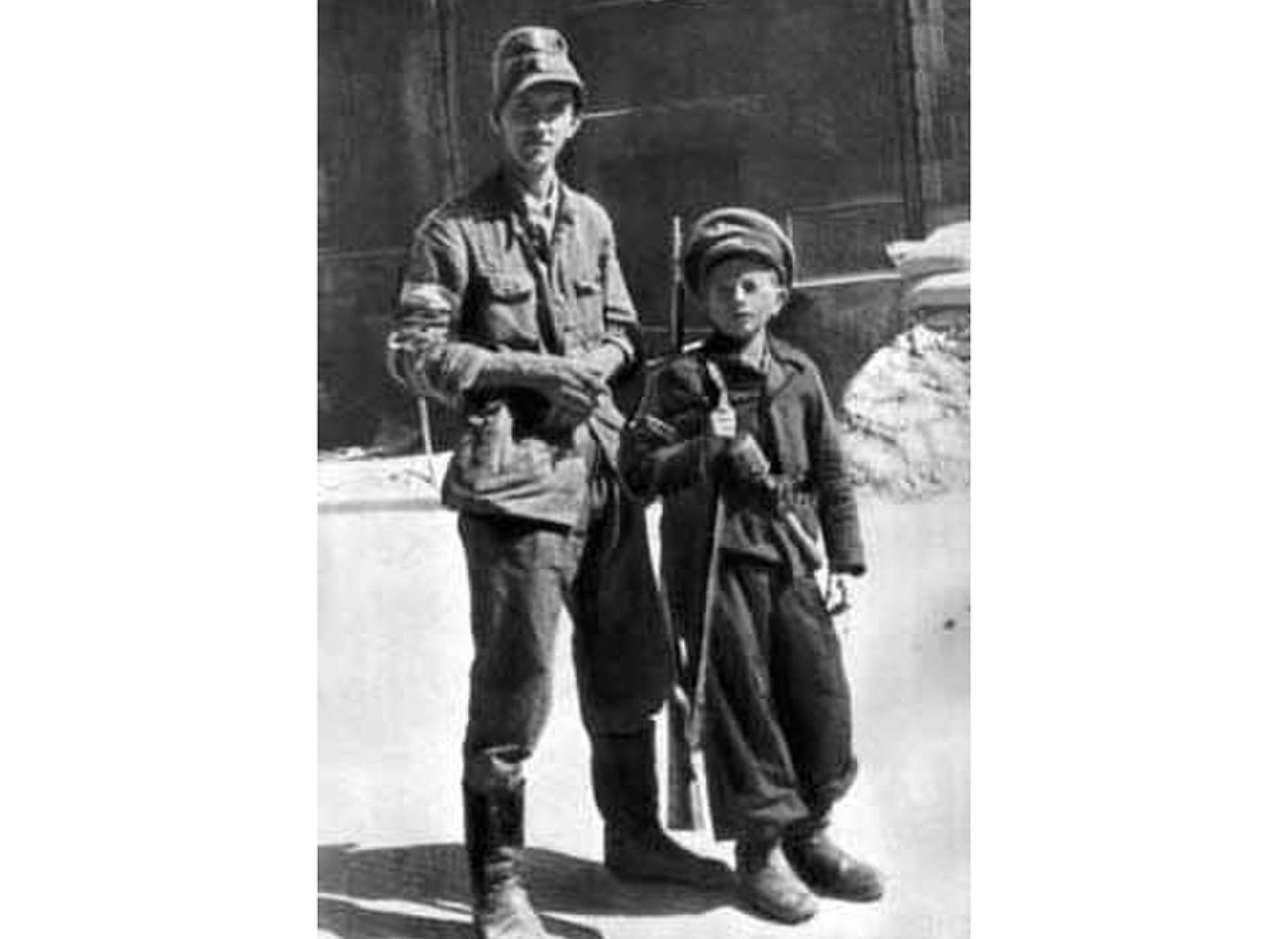
Soldier and child soldier near the Warsaw University of Technology. Stefan Rassalski, “Young Soldiers,” Warsaw, 1944.
The majority of boys and girls who participated in the Warsaw Uprising were members of the Gray Ranks (Szare Szeregi), an underground paramilitary wing of the Polish Scouting Association (Zwiazek Harcestwa Polskiego or ZHP), which was created in September 1939. In November 1942, three different age groups were created within the Gray Ranks.
Those 17 and older formed the assault groups, which took part in armed resistance throughout the war. During the Warsaw Uprising, its battalions (Zośka and Parasol) gained a reputation as some of the best trained in the Home Army. Younger members between the ages of 15 and 17 served in combat groups and were mainly responsible for reconnaissance and communication missions. Those aged 12 to 14 made up the last group, codenamed Zawisza, comprised of children aged 12 to 14 and were involved in auxiliary service, such as intelligence work and carrying messages and goods.
Younger members of the ZHP, such as Tymoteusz Duchowski, who was only 11 years old when the uprising broke out, were often tasked with delivering reports and transporting ammunition and medicine throughout the maze of sewers that connected the city underground. Nicknamed “sewer rats” (szczury kanalowe), children were ideal for this task since they were physically small. Moreover, in order to navigate and deliver messages and goods, these children had to be trained in map-reading and navigation, common skills taught by scouting associations.
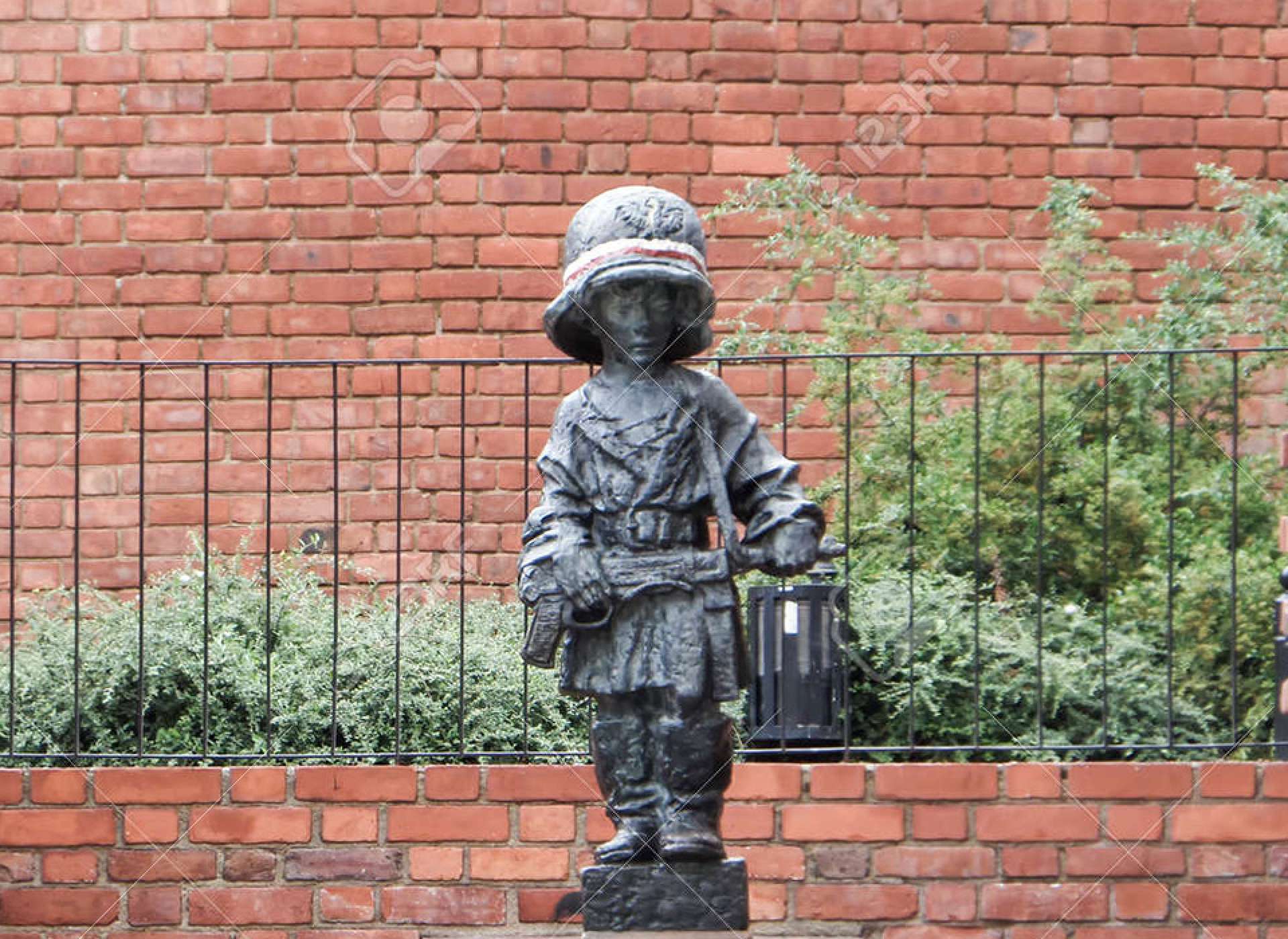
The Little Insurgent Monument located in Warsaw. Designed by Jerzy Jarnuszkiewicz, the bronze installation shows the figure of a boy soldier clutching a gun, weighed down by an adult-sized helmet. Little Insurgent Monument, Warsaw, taken by Jennifer Popowycz.
It is unknown how many young people actively participated in the Warsaw Uprising, however, more than 1,000 were sent to the POW camp in Lamsdorf (Lambinowice) following the capitulation on October 2, 1944. Nevertheless, according to Ewa Stanczyk, children who “closely straddled the border between childhood and adulthood” experienced “the realities of resistance, participation, patriotic fervor, violence, and defenseless.” In doing so, they “turned into powerful icons of resistance and objects of veneration in the collective consciousness of the city’s inhabitants.”
Total Mayhem: Losing Civilian Support
“The news is good. The Warsaw center is in our hands except the main arteries, there is fighting in the peripheral districts, the Soviet army is already close and will soon enter Praga, and the Allies will support us.” – Anna Szatkowska, Diary Entry on August 2, 1944
As Anna Szatkowska’s diary entry suggests, at least initially, the civilian population overwhelmingly supported the Warsaw Uprising. On August 4, 1944, Bor Komorowski reported to the exiled Polish government in London, “the civilians cooperate in the fight and even unarmed young people build barricades with enthusiasm. Women serve and fight with the men, everybody is very obedient and dedicated.”
However, August 5 proved to be the high point for the AK and civilian morale. During the first five days of the uprising the Germans had been caught completely off guard, the AK outnumbered the German garrison three to one, and controlled 125 square kilometers of territory.
One reason that morale had been so high at the start of the uprising was the AK and the city population’s shared belief that it would only take a few days for the Red Army to reach the city. Rumors spreading through the city supported the assumption that the Soviet army was already very close and would soon enter Praga, a neighborhood located on the eastern side of the city. Radio stations reported that the Red Army was practically in the city. One Warsaw resident described the diminishing morale as weeks passed with no sign of the Red Army:
“Now that the uprising had started, we were sure that by morning the Russians would have crossed the Vistula [River] to relieve the capital and be welcomed with open arms by the entire population. But when morning came, there was no sign of the Red Army…And still, days [and weeks] later, there was no sign of the Russians. Our dream of imminent liberation began to fade rapidly.”
Since the Soviet offensive across Eastern Europe had been halted, however, it gave the Germans time to respond, become organized, and eventually rain terror on the entire city. After the first week of the uprising, neither side had gained a decisive advantage. According to historian Norman Davies, “Warsaw became the scene of long, relentless battles of attrition.” The shooting became more intense, defensive explosions became more frequent, debris was constantly raining down on the city, and a haze of smoke developed as the city slowly burned to the ground.
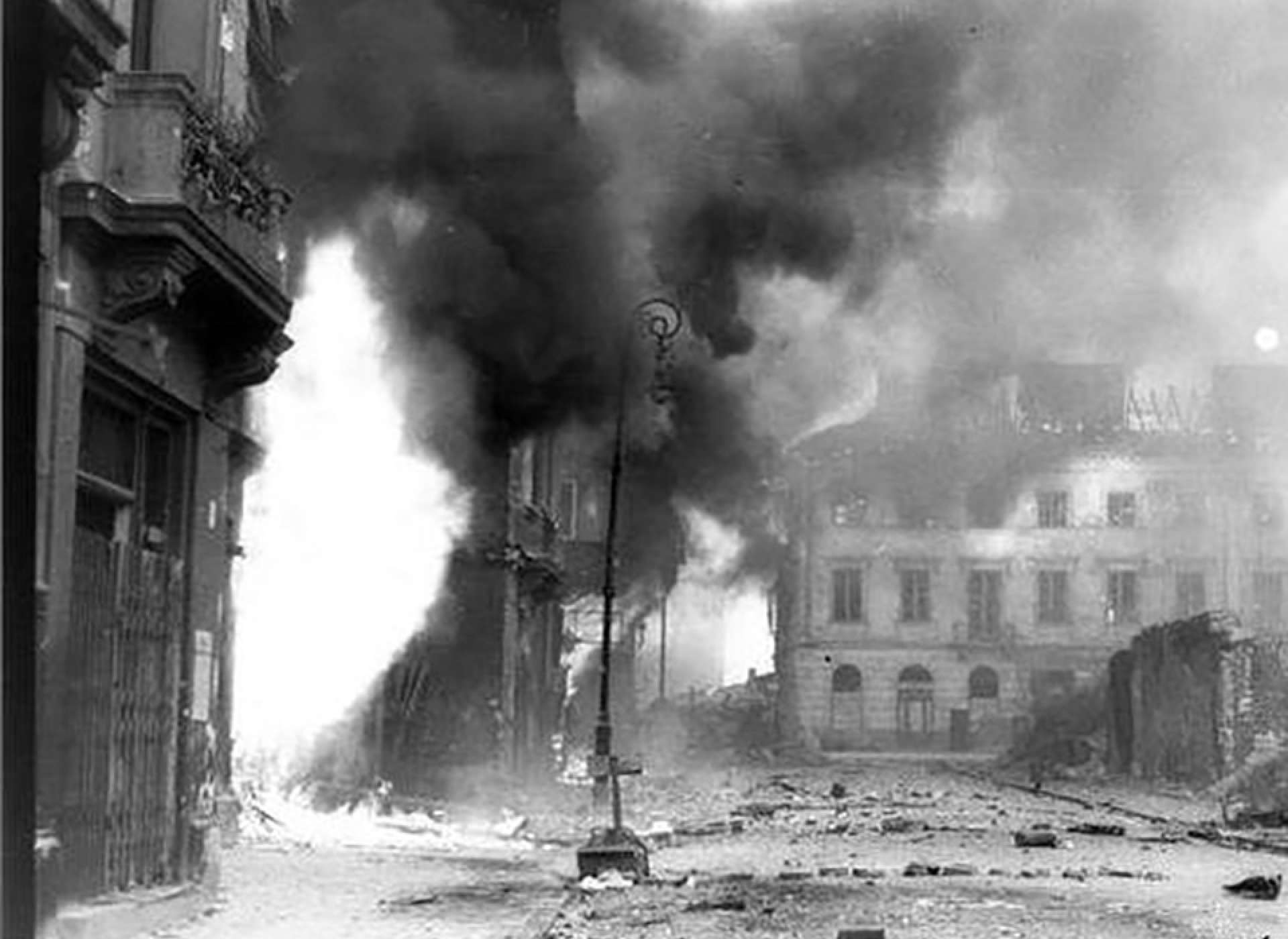
Fires destroy buildings at the intersection of Nowy Swiat and Warecka Street in Warsaw. “Warsaw Uprising-Burning Buildings,” in Jerzy Piorkowski, Miasto Nieujarzmione, (Warsaw: Iskry, 1957), 144.
The people of Warsaw became horrified at seeing corpses piling up in the streets and courtyards of the city as they struggled to survive themselves. Death appeared all around them and food, shelter, and supplies quickly dwindled. Citizens were hungry and thirsty, and suffered from exhaustion after weeks of constant warfare in the city. According to historian Alexandra Richie, “the country was bleeding and Warsaw was dying, with its capital leveled to the ground and its inhabitants killed by the thousands.”
In his memoir, Miron Bialoszewski describes the change in morale among the city’s population: “Volunteers, replying to the call to arms by the AK, did the best they could with few resources in the first five days of the uprising. Excavating, digging out, extinguishing fires, helping—it was difficult, although it was done, but it was [soon] made impossible by new bombs falling all the time, incendiaries. Or, rather, it was hopeless. A vicious cycle.”
According to Maria Tarnowska, a survivor of the uprising, “everyday life was a terrible stress caused by permanent tension in connection with the military situation and the roar of artillery and demolished houses. Those feelings often became a catalyst for unloading emotions on the insurgent authorities and soldiers.”
As the uprising seemed to endlessly continue, civilians became demoralized by the incessant bombardment, starvation rations, as well as the lack of water, electricity, and basic necessities. Tensions soon arose between the AK and civilians. The deterioration of civilian morale and tensions between the Home Army and Warsaw’s populace reached a climax after the German assault on Old Town, which was a crushing loss for the AK and led to their withdrawal from several key positions on September 2, 1944.
A subsequent article in this series will examine the German response, the lack of Soviet support for the uprising, and the shift in civilian morale, culminating in the collapse of the Warsaw resistance by October 1944.
Recommended Reading
Norman Davies, Rising ’44: The Battle for Warsaw, (New York: Penguin, 2003).
Halik Kochanski, The Eagle Unbowed: Poland and the Poles in the Second World War (Cambridge: Harvard University Press, 2012).
Alexandra Richie, Warsaw 1944: Hitler, Himmler, and the Warsaw Uprising, (New York: Picador, 2013).
Jennifer Popowycz, PhD
Jennifer Popowycz, PhD is the Leventhal Research Fellow at The National WWII Museum. Her research focuses on the Eastern Front and Nazi occupation policies in Eastern Europe in World War II.
Cite this article:
MLA Citation:
APA Citation:
Chicago Style Citation:
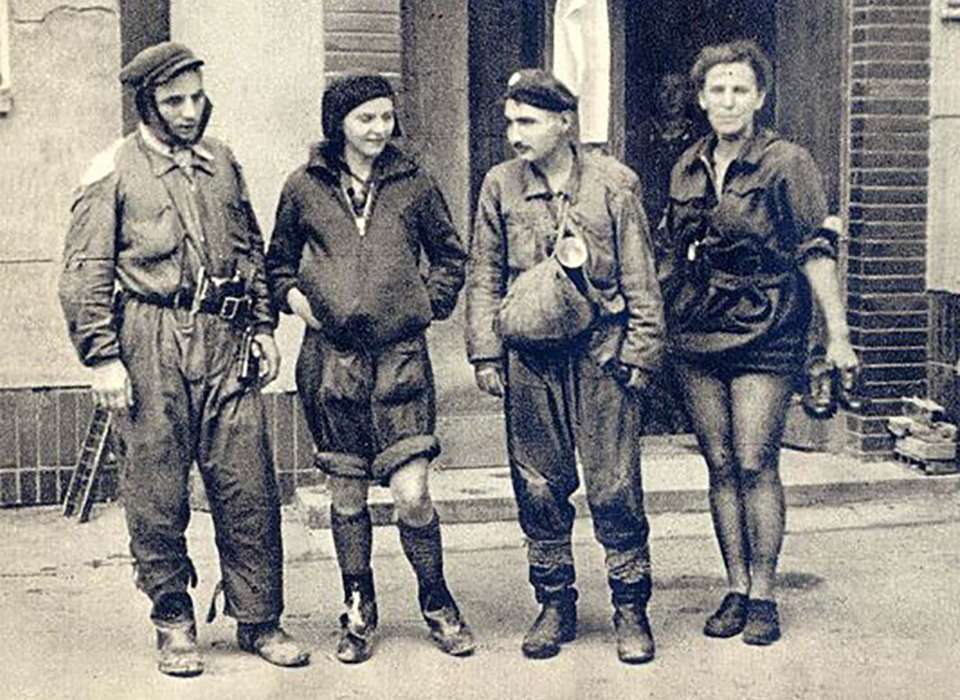




![Max Fuchs, New York City cantor, sings as Rabbi Sydney [sic] Lefkowitz, Richmond, VA, conducts the first Jewish services from Germany.](/sites/default/files/styles/max_650x650/public/2025-10/image1.jpg)



